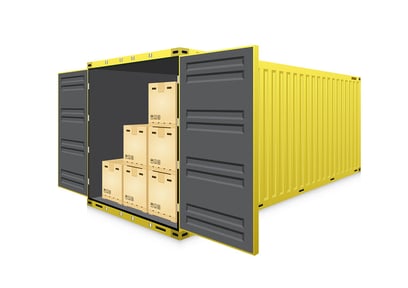Filling a container is like assembling a 3D puzzle. Put the pieces together just right, and you win a prize: lower freight costs.
That’s because ocean carriers charge for transportation by the container. If you pay $3,000 to ship a 40-ft. box, that price stays the same whether you fill the box with 20 pallets of cargo or 25. The more product you fit in, the less you pay per unit.
Here’s some advice for creating a container loading plan that gives you maximum benefit for your transportation buck.
1. Use load planning software
In the old days, an experienced load planner worked with graph paper, a ruler and a pencil to figure out how best to fit cargo into a container. Many of those people did a terrific job. But as we all know, even the sharpest mind can’t crunch numbers as fast, effectively or accurately as a computer can.
 Fitting cargo into a container is both a science and an art. Today, forward-looking shippers—or their service partners—handle the science by investing in “load planning” or “stow planning” software. When it’s time to build a load, you enter information about the cargo—the number of pieces, dimensions and weights. You also note special conditions, such as whether you can turn a pallet 90 degrees, or whether it’s safe to stack one piece on top of another.
Fitting cargo into a container is both a science and an art. Today, forward-looking shippers—or their service partners—handle the science by investing in “load planning” or “stow planning” software. When it’s time to build a load, you enter information about the cargo—the number of pieces, dimensions and weights. You also note special conditions, such as whether you can turn a pallet 90 degrees, or whether it’s safe to stack one piece on top of another.
Using this information, the software quickly produces a pallet loading plan that fits all the cargo into the container with the correct weight distribution. The plan includes a diagram to show you where to place each piece, and instructions on how to block and brace the load. Often, the software will produce several alternative plans. You choose the one that best meets your needs.
2. Measure carefully
Of course, a load plan is only as good as the data that goes into it. Get the details wrong, and you might end up with less freight in the container than you want, or your load might suffer damage in transit. It’s important to carefully weigh and measure every piece in your load, and take note of any restrictions that apply. And, of course, the person who enters the data must do an accurate job.
3. Choose containers strategically
Sometimes, size matters a lot. For example, it costs significantly more to move a 40-ft. container on the rails than a 20-ft. container. In certain cases, the load that a company planned to ship in a lightweight 40-ft box would move more economically as a heavyweight 20-footer.
Also, a high-cube container can help in some cases. If your load is dense, the extra foot of height in a high-cube might not make a difference, since you’ll probably hit the legal weight limit before you fill that space. But if you’re shipping a less dense commodity, you might take advantage of the extra foot by building taller pallet loads.
An experienced freight forwarder can help you evaluate the pros and cons of different cargo container types for specific loads, including heavy freight shipping.
4. Get creative with packaging
While software handles the science of container loading, a planner who understands the art of this discipline can modify the packaging to take better advantage of space in a container.
For instance, if you make the pallets a few inches narrower, will that free up room for extra pallets in the container? Can you design your cases to be taller, so each one contains a little more product?
Lose a few inches, cut the cost in half
One of I.C.E. Transport’s customers was shipping metal castings in cases that were loaded onto pallets. The pallets were so wide that the shipper could load only one row of them in a container, leaving a good deal of empty space.
The shipper’s supplier could not provide narrower pallets. So, I.C.E. devised another solution, bringing the pallets into a warehouse to cut a few inches from each one before shipping. That let the shipper fit two rows of loaded pallets in a container, rather than one—reducing the cost per unit for each shipment by 50 percent.
5. Make your cargo more compact
A large item, such as a big piece of machinery, might require a flat rack or open top container, which costs more than a standard box. And when it comes time to transport that item over the road, you might have to treat it as an oversized cargo shipment, with all the attendant extra costs.
If you can disassemble or reconfigure the load to make it fit in a standard container, you will avoid that extra expense.
The key to money-saving container loading plans
The largest shippers can invest in load planning software and employ talent to devise creative, money-saving container loading solutions.
If you’re not one of those giants, no worries—there are service providers ready to help. But when it comes to load planning, not every freight forwarder has evolved beyond the graph paper, ruler and pencil stage.
Your best partner is an ocean freight forwarder that has mastered both the science and the art of container loading, using software and human ingenuity to ship as much cargo as possible at the lowest possible price.
To get more advice on container loading, contact I.C.E. Transport.





